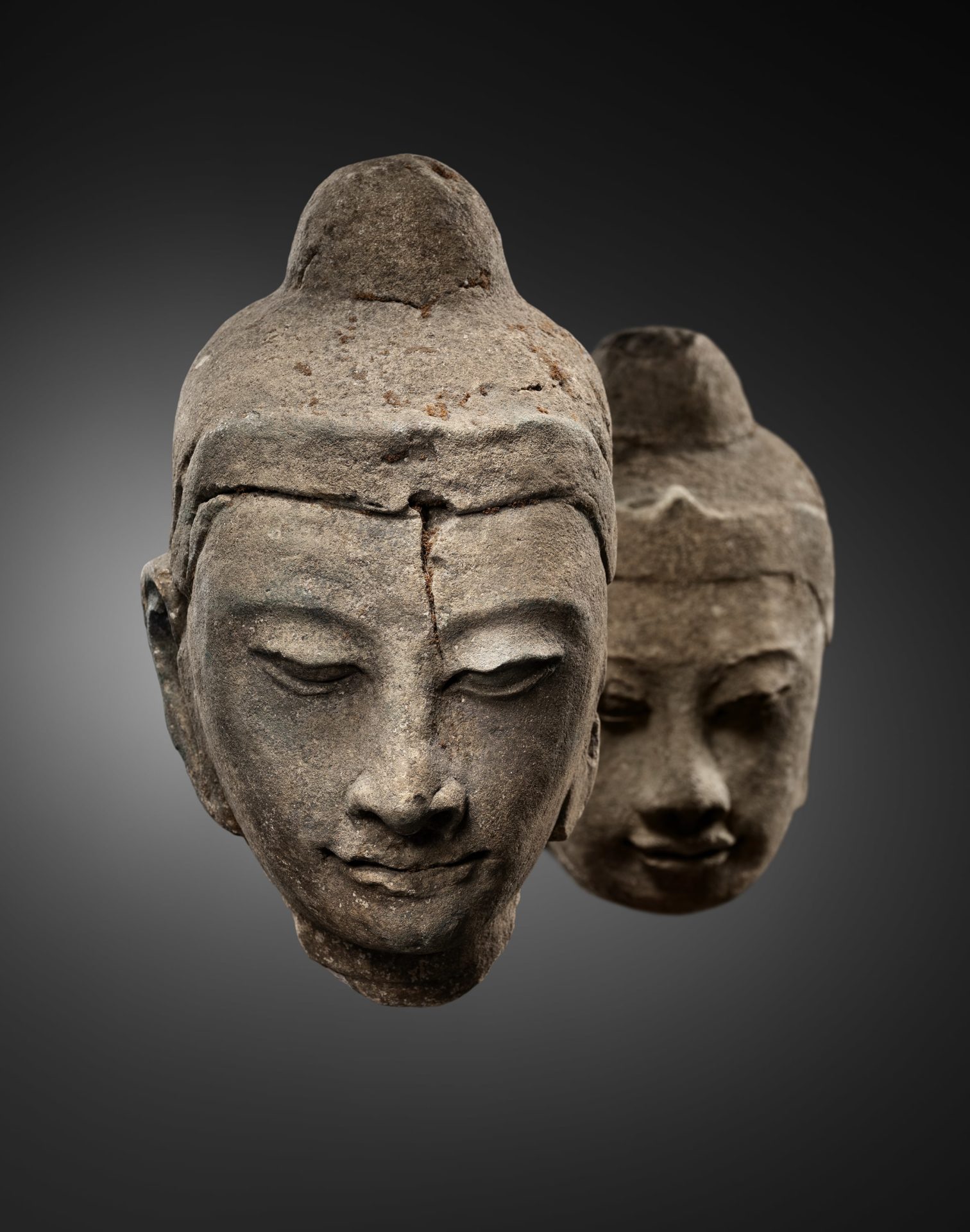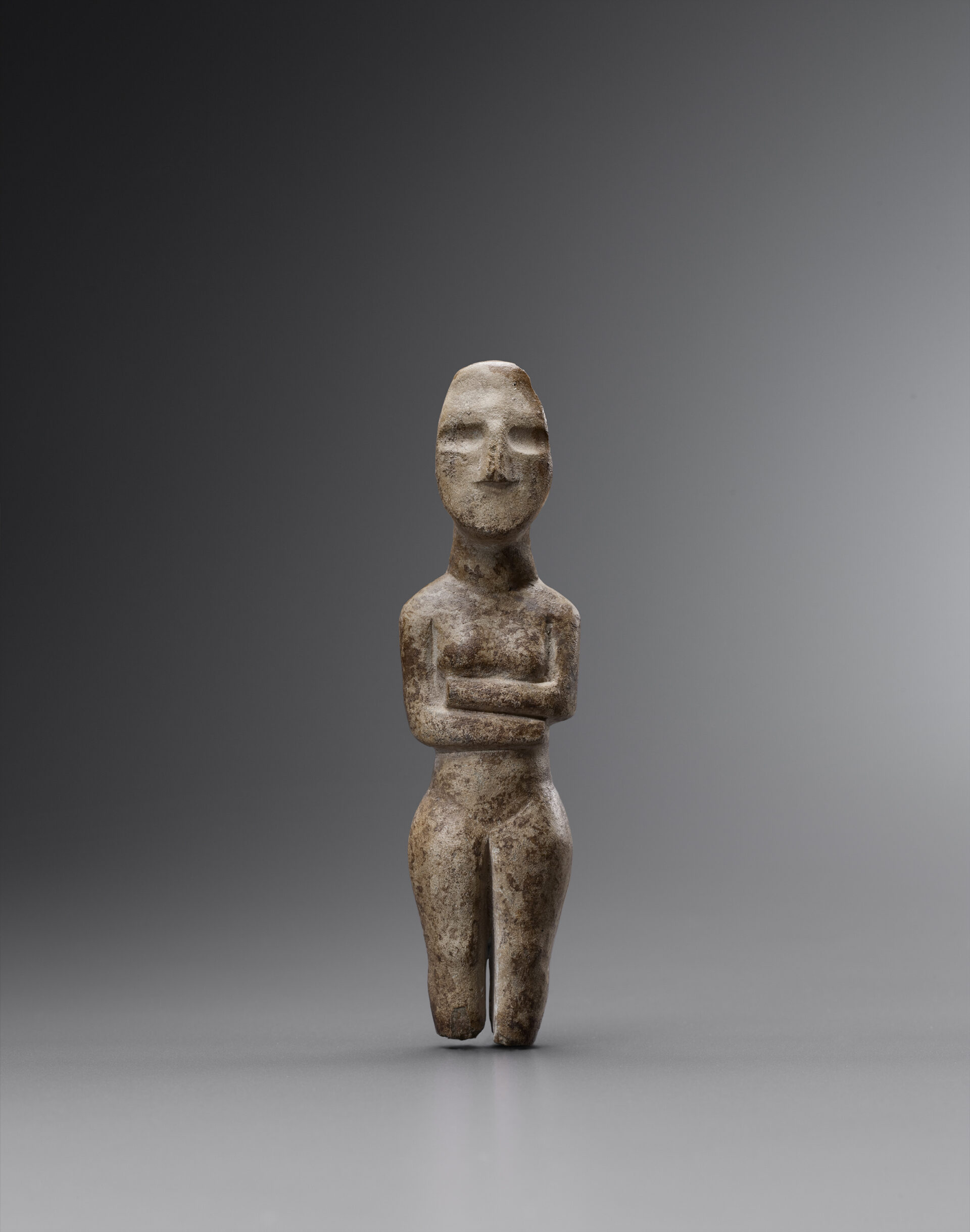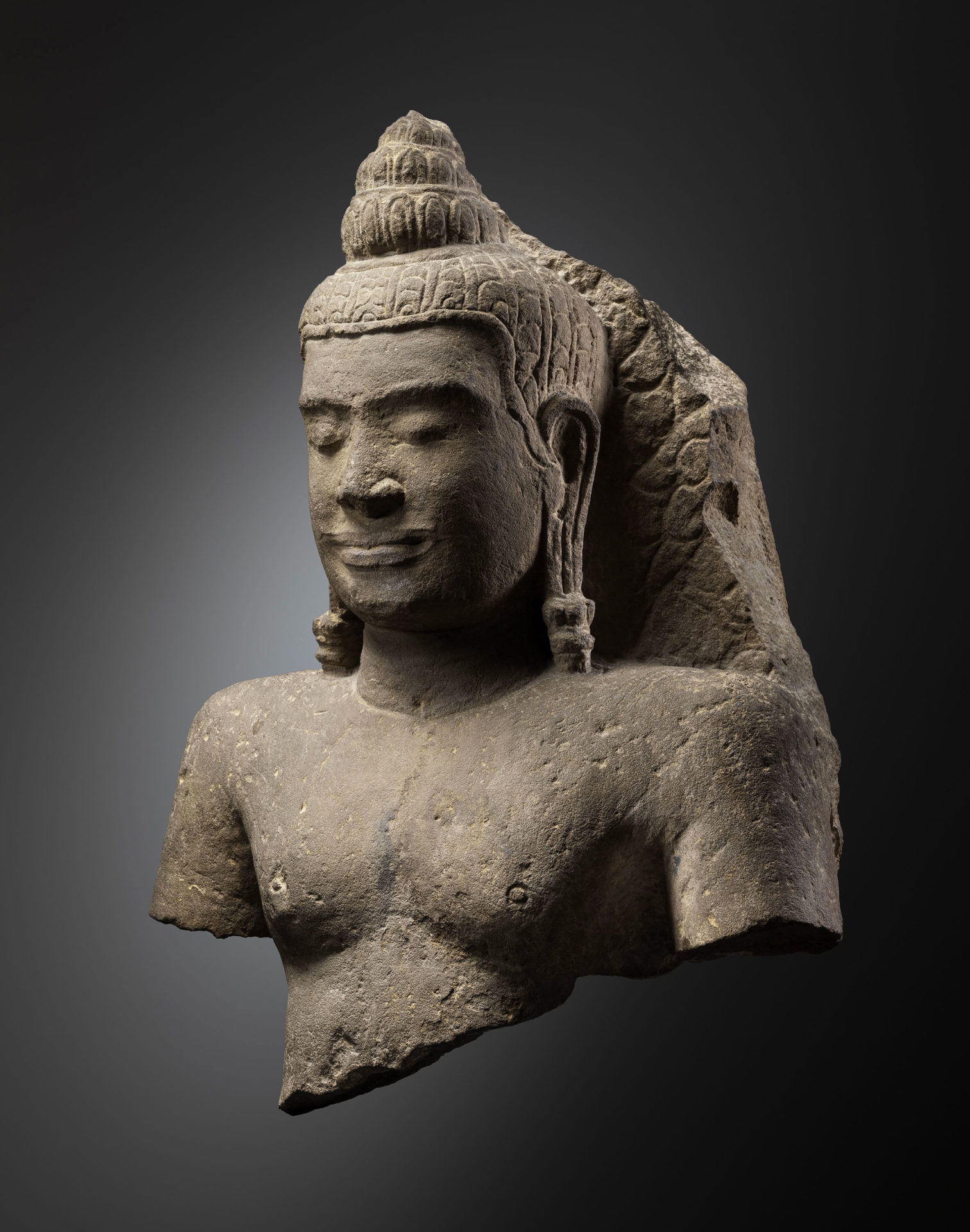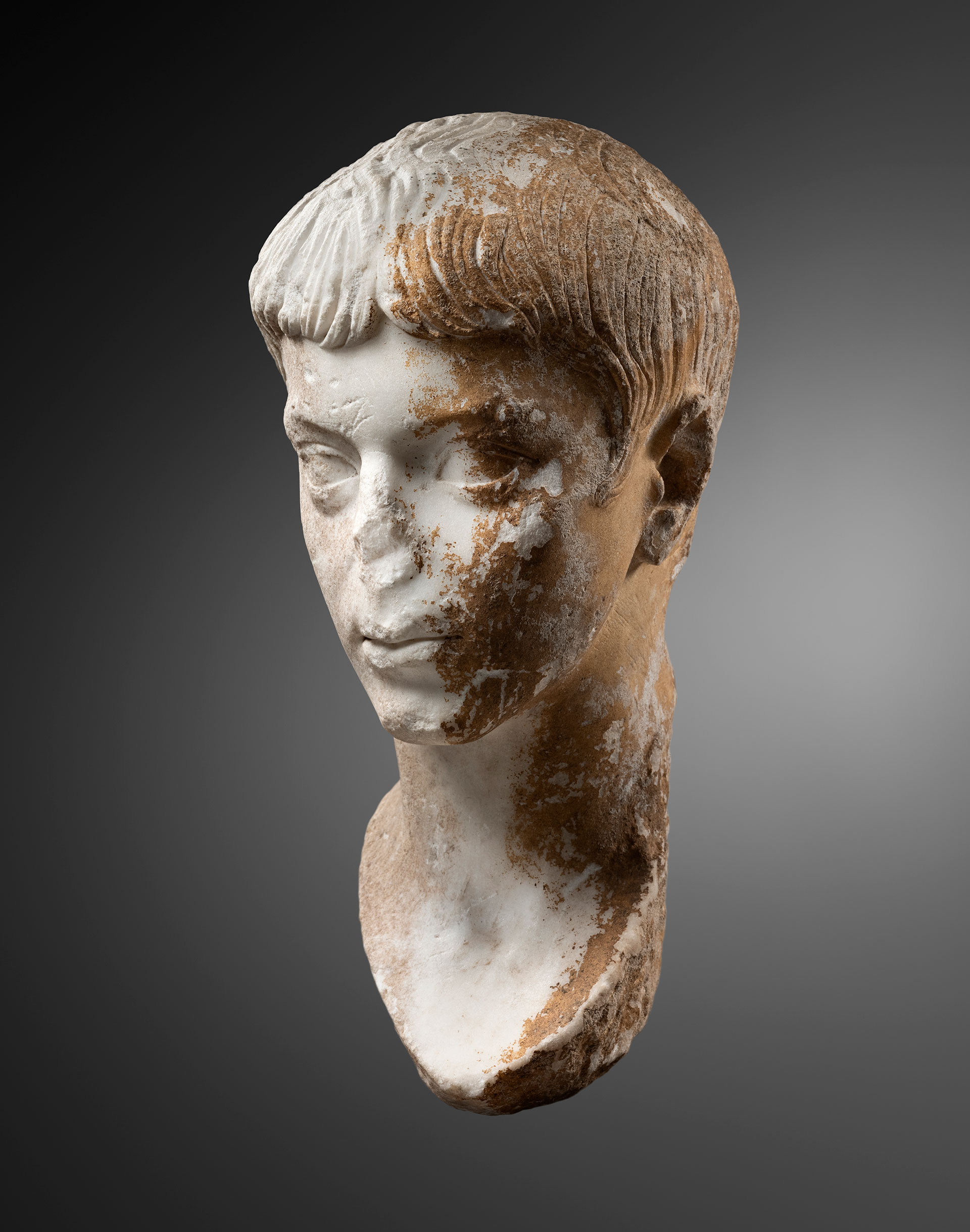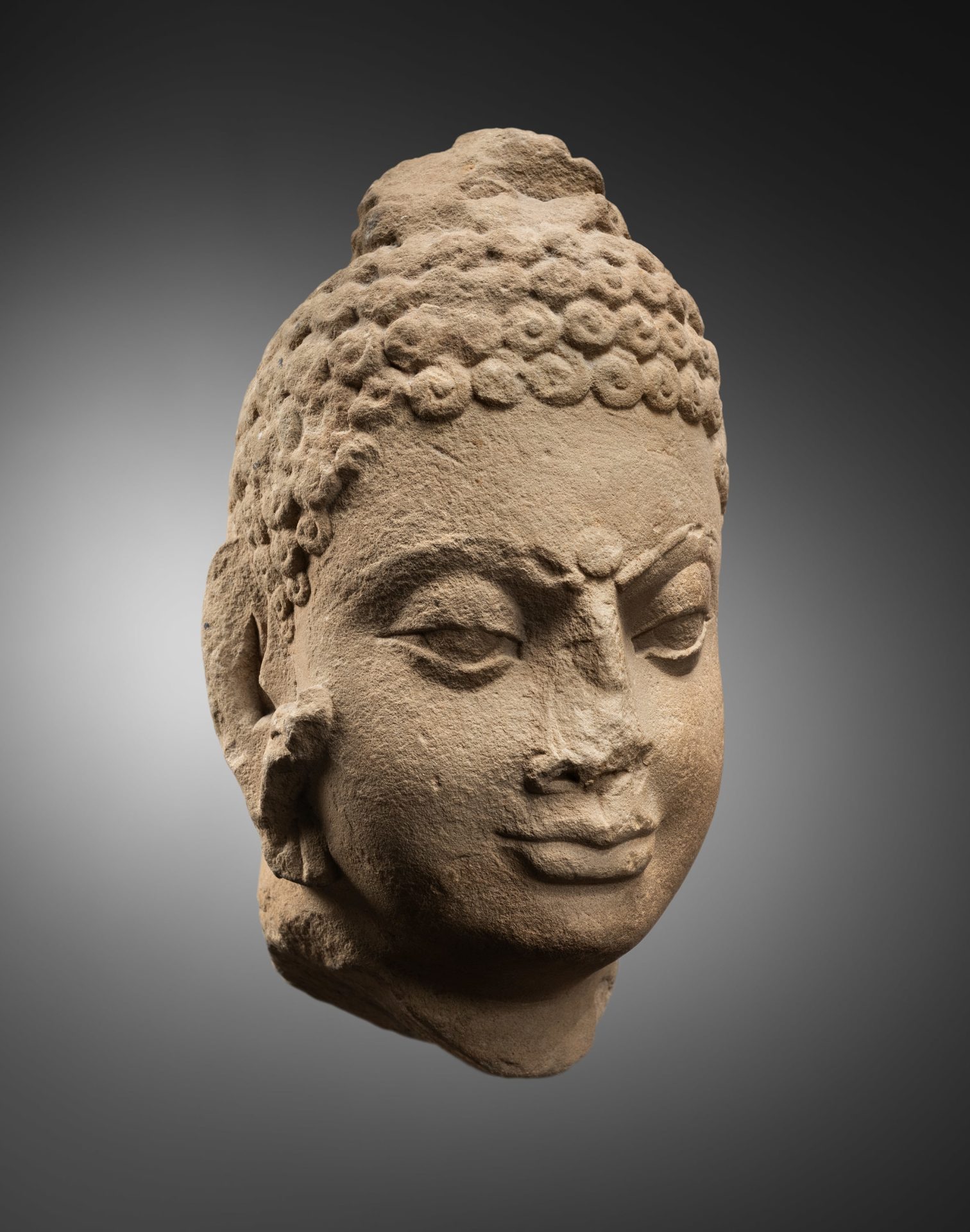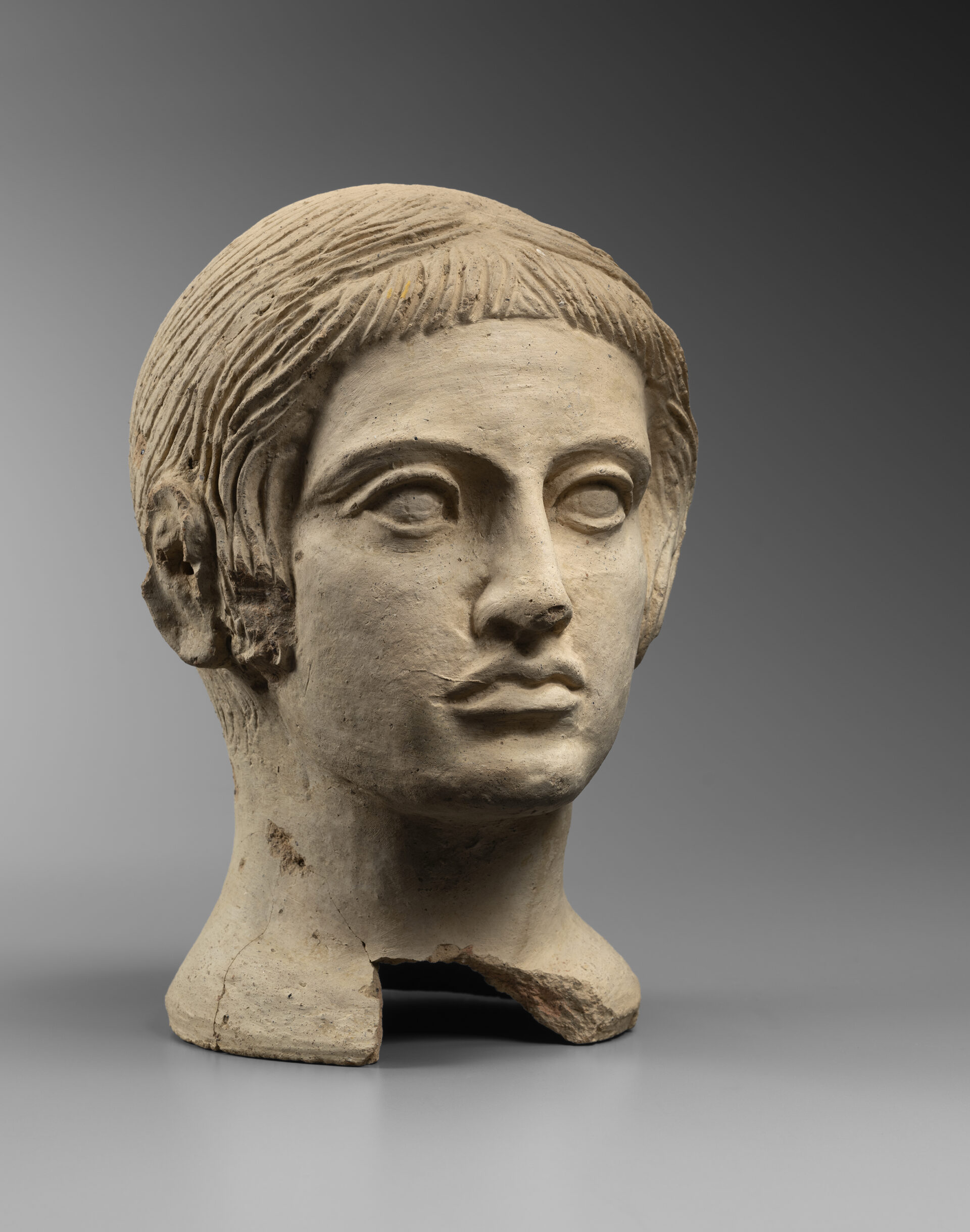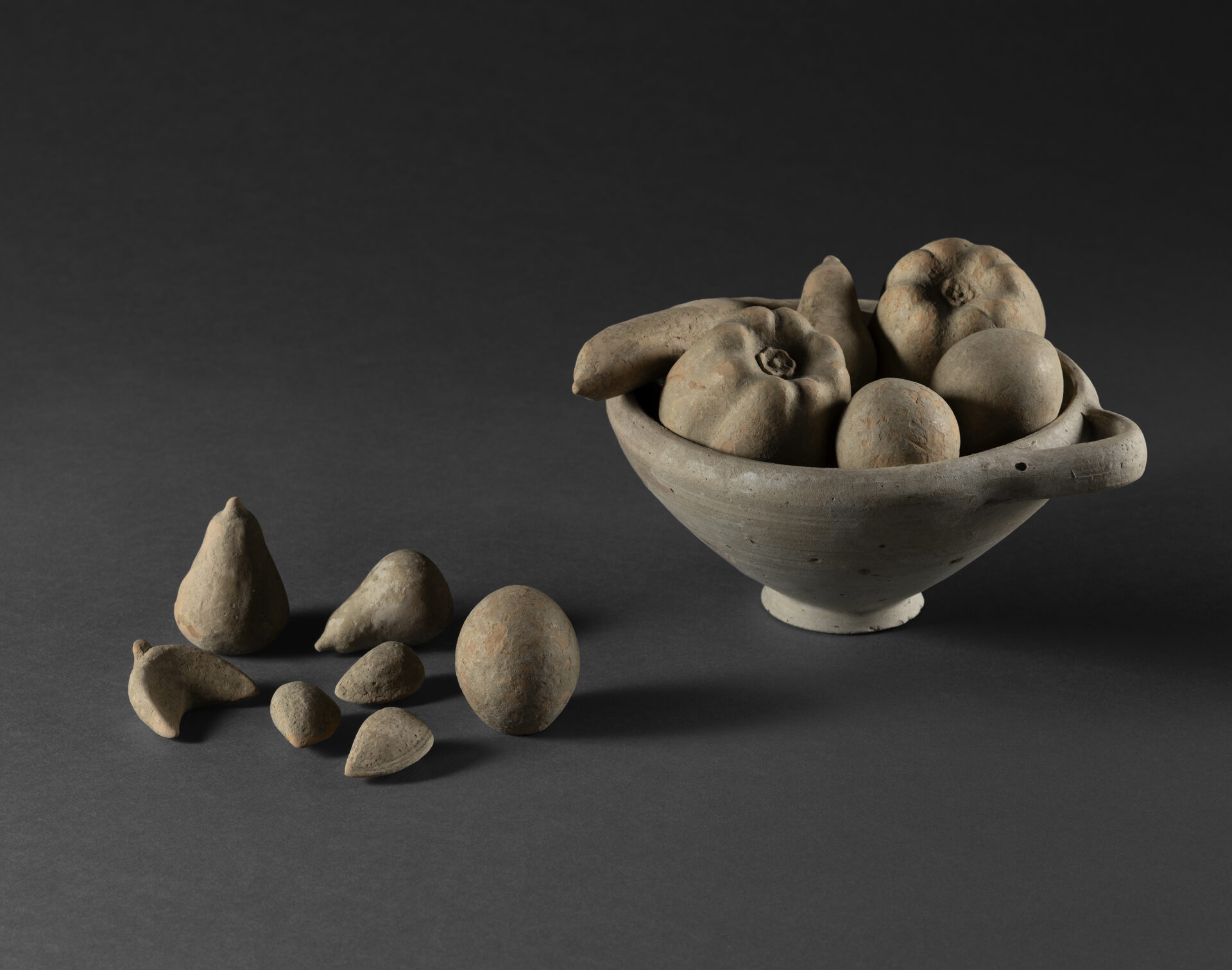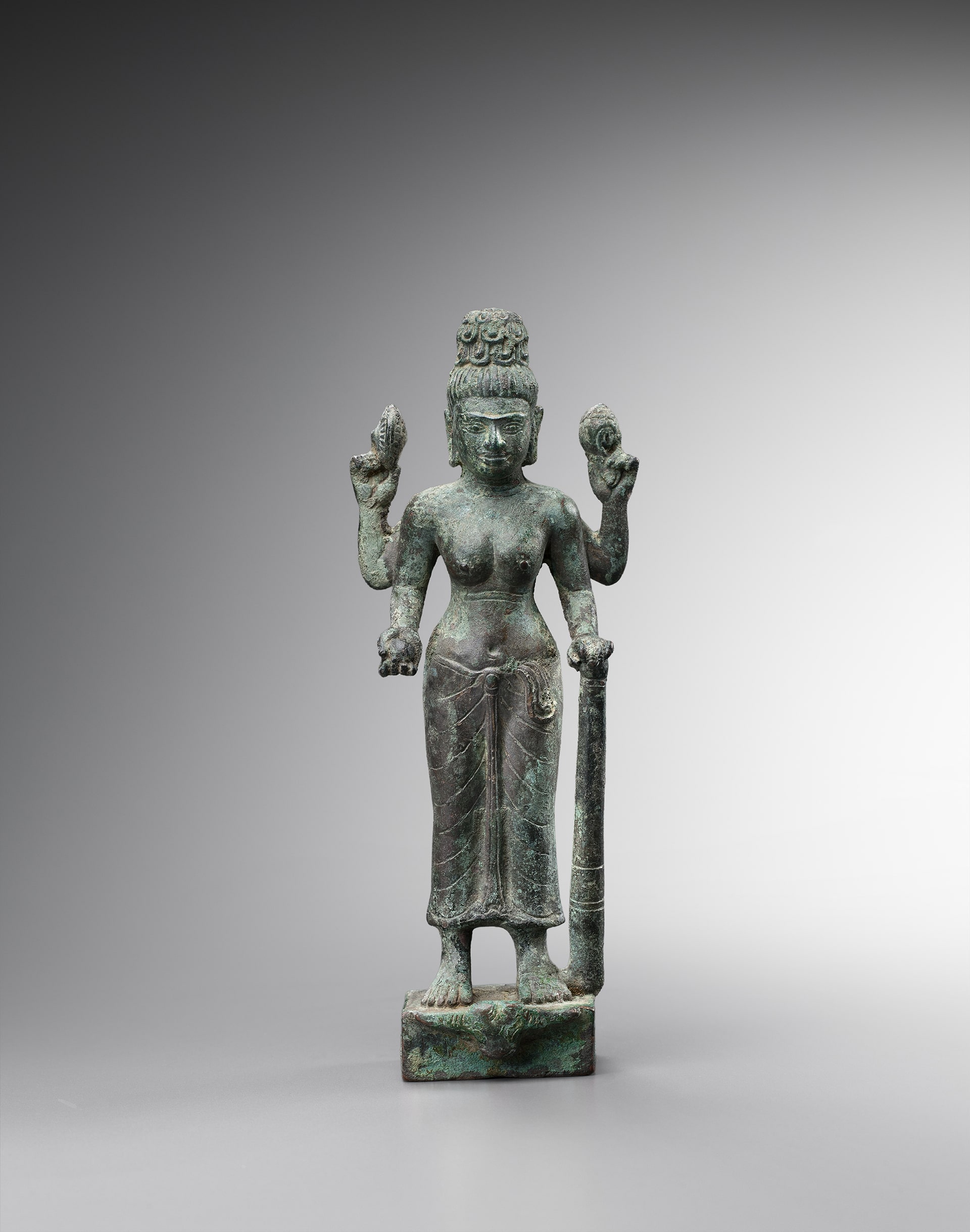
Mahisha, who had achieved great powers through the practice of austerities and was tormenting the world, could not be stopped by Shiva, Vishnu, or any of the other Hindu gods. In order to defeat him, the other gods lent their powers to Durga to augment her own. After a fierce battle, she subdued Mahisha and saved the world; her defeat of the demon is indicated by the head of the bull upon which she stands. Durga’s assumption of Vishnu’s powers is shown by his attributes which she holds in her hands: the conch shell (sankha), the wheel (cakra), and the ball symbolising the earth (mahi). Vishnu’s club (gada) is below her missing lower left hand.
The generous modelling of the body and the naturalist treatment of the face ending in a jata-mukuta hairstyle date the sculpture with certainty to the tenth century, without being able to relate it to a particular style.
Goddess Durga Mahishasuramardini
- Cambodia, Khmer culture
- Angkor period, 10th century
- Bronze
- H. 18 cm
- Provenance:
• Private Belgian collection, Brussels, 2013
- Publication:
• GRUSENMEYER Karim & Isabelle, WOLINER Damien, A World of Sculptures, Brussels, 2016, n°36, p.136
Photo credit : Studio Asselberghs – Frédéric Dehaen

